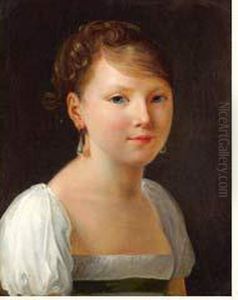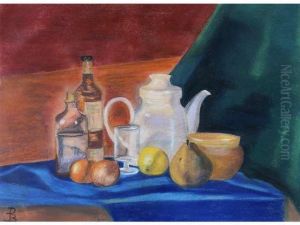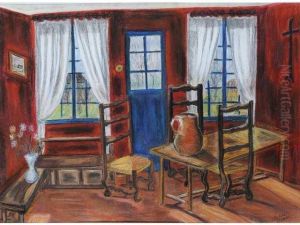Constance M. Blondel Charpentier Paintings
Constance Marie Charpentier, born Constance Marie Blondel, was a French painter of the 18th and 19th centuries. Her artistic career was notably during a period of significant change in French history, encompassing the end of the Ancien Régime, the French Revolution, the Napoleonic era, and the Restoration. She is particularly recognized for her contributions to Neoclassical painting, which was the dominant artistic style of her time.
Born in 1767 in Paris, Charpentier was immersed in an era where the arts were flourishing, yet it was still challenging for women to receive the same recognition as their male counterparts. Despite these challenges, she managed to receive a thorough artistic education, which was quite rare for women at that time. She studied under the well-known painters François-André Vincent and Jacques-Louis David. Under their tutelage, she honed her skills in the neoclassical style, which emphasized clarity, order, and idealized beauty drawn from classical antiquity.
Charpentier exhibited at the Paris Salon, the official art exhibition of the Académie des Beaux-Arts in Paris. Her work was well received, and she gained a reputation for her genre scenes, portraits, and miniatures. One of her most famous works is 'Melancholy,' which was exhibited at the Salon of 1801. This painting is notable for its expression of emotion, capturing the spirit of Romanticism that was beginning to influence artists at the turn of the 19th century, despite her neoclassical roots.
Throughout her career, Charpentier maintained a successful position in the art world, which was supported by the patronage she received from various members of French society, including the family of Napoleon Bonaparte. Her works reflect the changing roles of women during her time, as she often depicted them in roles beyond the domestic sphere, showing them engaged in intellectual and artistic pursuits.
Constance Marie Charpentier's death in 1849 marked the end of a long and productive career. Her paintings continue to be admired for their technical skill, emotional depth, and historical value. Although she is not as widely known as some of her contemporaries, her contributions to French art have been reassessed and celebrated in more recent times, acknowledging her as a significant figure in the history of women artists.







